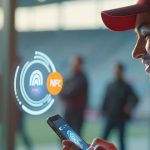In a world where students are digital natives and attention spans are shorter than ever, traditional teaching methods are no longer enough. To meet their evolving needs, the future of education must be immersive, personalized, and student-centered. At Globant, we’re witnessing a shift in K-12 education that not only enhances classroom engagement but is fundamentally transforming how students learn, apply, and retain knowledge: the convergence of gamified learning, realistic simulations, and AI.
Let’s explore how this trio is redefining the way students internalize knowledge and use it in meaningful ways.
Gamification: making learning addictive
Gamification introduces game mechanics —like points, badges, levels, and rewards— into the learning process. It’s not just about fun; it’s about boosting motivation and participation. When learners are motivated to do something, they pay more attention to it, really engaging with the material. And when their attention levels go up, they remember it better. This is especially important for younger learners, like children, to maintain their curiosity.
Additionally, instant feedback and progress tracking within gamified learning experiences help students understand their strengths and weaknesses, encouraging them to improve and achieve their objectives. For instance, platforms like Classcraft have shown measurable gains in student performance, including improved writing functionality among early learners. However, true gamification impact depends on purposeful implementation. Simply adding game elements does not guarantee improved understanding. To truly achieve meaningful impact, gamification must go beyond surface-level features. Effective approaches should:
*Focus children’s attention on key learning points
*Make learning activities highly engaging
*Incorporate rewards that signal progress within the game
*Use surprise elements to maintain interest and motivation
*When designed intentionally, gamification becomes more than a motivational layer: it becomes a driver of deeper learning and sustained engagement.
Simulation-based learning: real-world practice in a safe space
Simulations immerse students in realistic, problem-solving environments—from virtual science labs to civic role-playing games, allowing hands-on experimentation by failing safely, iterating quickly, and connecting theory to practice. These experiences make abstract concepts tangible and foster deeper cognitive processing. Examples include:
*Virtual science labs (e.g. Labster, Gizmos) for safe, repeatable experimentation.
*Social studies simulations (e.g. iCivics) where students role-play as lawmakers or judges.
*STEM challenge platforms that promote collaboration and creative problem-solving in areas such as engineering.
Simulations help students build resilience, sharpen analytical thinking, and adapt fast—core competencies for tomorrow’s workforce.
AI: The Personalization Engine
AI is the game-changer that makes simulations and gamified platforms adaptive and intelligent. In K-12 learning, its capabilities include:
*Personalized learning paths that adapt difficulty and content based on student performance, ensuring tailored instruction for every learner.
*Real-time feedback that guides mastery by offering hints, suggestions, and explanations in response to student actions.
*Predictive analytics that detect at-risk students early and recommend timely, targeted interventions.
Solutions like MATHia by Carnegie Learning and Squirrel AI have demonstrated improved student outcomes by customizing instruction at scale.
The synergy of gamification, simulation, and AI
When combined, gamification, simulation, and AI create a transformative learning experience as it becomes:
*Immersive: students are active participants, not passive recipients.
*Adaptive: dynamic content evolves based on real-time data.
*Engaging: game mechanics keep students motivated and focused.
However, while the potential is immense, implementation must be thoughtful, considering aspects like:
*Equity: not all students have access to devices or high-speed internet.
*Teacher Training: educators need support to adopt new tools effectively.
*Data Privacy: compliance with FERPA, COPPA, and GDPR is critical when using AI in education.
At Globant, we help our partners navigate these challenges with secure, scalable, and ethical educational solutions.
Looking ahead: what’s next in K–12 innovation?
The future of K-12 education is immersive, intelligent, and student-centered. As AI, gamification, and simulations continue to evolve, we expect:
*AI-powered VR/AR simulations for experiential learning.
*Cross-disciplinary platforms that blend STEM, humanities, and arts.
*Increased learner autonomy, where students co-create their educational journeys.
Education is no longer about passive absorption—it’s about active creation, and the tools to support it are already here. The integration of gamified simulations and AI in K-12 education is a paradigm shift. By creating interactive, personalized, and engaging learning environments, educators can better prepare students for the complexities of the real world. As we continue to innovate, the focus must remain on equity, effectiveness, and ethical implementation, ensuring that every student has the opportunity to thrive in this new era of learning.
At Globant, we partner with education innovators, school systems, and education providers to design and build next-gen learning experiences. From AI-driven platforms to immersive simulations, we bring together technology, design, and strategy to transform education. Let’s talk about how we can help you build the future of education together.



